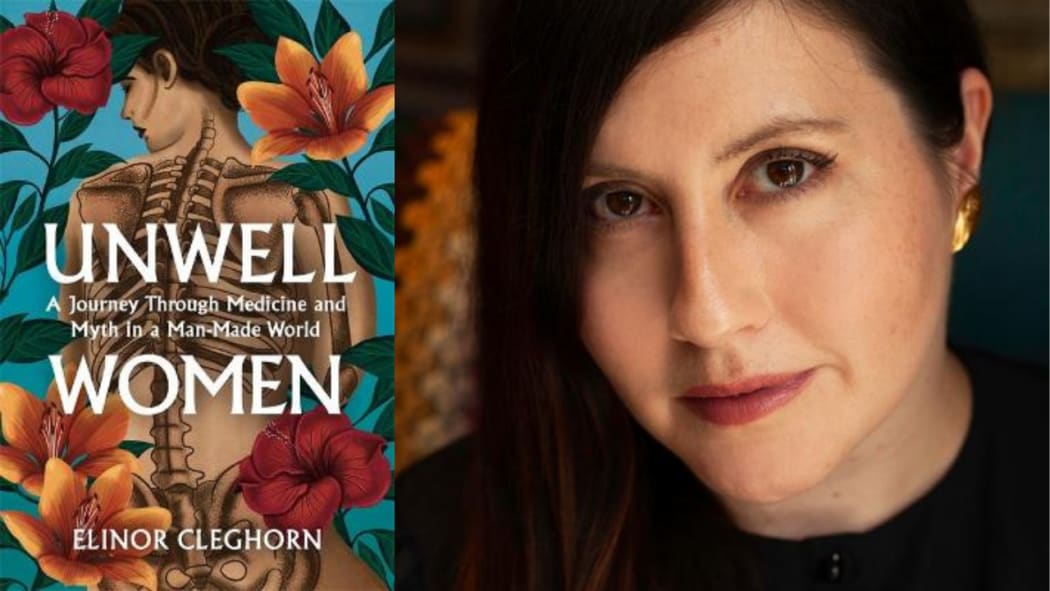For years Elinor Cleghorn suffered in pain, which was undiagnosed and dismissed, like countless women before her going back 2000 years.
Cleghorn, who has a phD in cultural history, traces the roots of medical sexism and misunderstanding of women's bodies in her new book: Unwell Women: Misdiagnosis and Myth in a Man-Made World.

Dr Elinor Cleghorn on her book Unwell Women Misdiagnosis and Myth in a Man-Made World Photo: supplied
For eight years, Cleghorn suffered in pain that was brushed off as being emotional or hormonal by doctors.
It wasn’t until she developed a heart condition after giving birth to her son, who also had a heart condition, that doctors began to take a closer look, she says.
"I was never referred for any diagnostic tests, never taken seriously, never medicated and always sent away and belittled.
"So my diagnosis was a real vindication that I did know something was wrong with my body but it also made me understand that I had endured this dismissal when really I should've been cared for and referred so my disease would've been diagnosed before it got to that emergency situation."
In her search for answers to her own condition, Cleghorn says she found her experience was nothing new and has been built on centuries of social and medical prejudice and myths.
For example, physicians in ancient Greece generally believed women's illnesses and ailments, as well as treatments, always had to do with their reproductive organs, she says.
"When physicians were trying to puzzle out what was happening under the skin of human bodies, they had to draw also on social and cultural ideas about gender, what bodies do, what bodies are for.
"In that patriarchal society, women were primarily reproductive creatures, so it made sense for the ancient Greeks that the reproductive organs were the central organs of the female body and therefore would be the ones that a woman's health and illnesses and diseases pivoted around.
"But what these ancient ideas really ingrained and what we're grappling with today is that women are very aligned with their biology and to some extent they're at the mercy of it.
"I think there's always been this sense in medicine that women are not the best narrators of their bodies, because their bodies are somehow not their own, that they're destined for other purposes."
An example of this in today is the earliest studies of endometritis, which assumed the condition affected young white women who wanted careers and delayed childbearing, she says.
"There was a theory postulated at the time that the reason that women developed endometritis was because they were menstruating and not interrupting menstruation with pregnancy.
"So it created a very strange myth that endo was a disease that was almost a punishment for defying nature's strict boundaries or the biological imperative of being female."
Historically, women who did express pain were often the subject of brutal surgeries, which were justified even in the case of "emotional disorders", she says.
"In reality, those emotional and nervous disorders were symptoms of social unrest or women wanting more for their lives than domesticity and marriage. So it was a frighteningly broad spectrum of punishment in which women could effectively be condemned.
"Lobotomy - which was a very popular medical procedure for dealing with certain mental and also physical illnesses in the 1940s - was often justified if a woman had dissatisfaction around her domestic role or wanted more for her life.
"So a sense of 'housewife hysteria' could be justification for something as brutal as drilling into a woman's skull and removing a part of her brain."
The broad definition of hysteria as a medical condition from the 17th to 19th century also elevated the myth that a woman's pain was likely to be emotional rather than physical, she says.
"We see that playing out today in many different ways. We can also see biased studies that prove that women are more likely, when they say they have pain, to be prescribed antidepressants and sedatives for example, when men are more likely to be offered pain medication."
While medical knowledge has improved, the history of misdiagnosis and misconceptions can explain why it takes as long as 10 years for women to be diagnosed with endometritis, she says.
"For the first time in history, women are just beginning to outnumber men in entries to medical schools.
"So what we hopefully will look at in the future is a more egalitarian medical system, because historically medicine has been male dominated in both practice and knowledge."
However, she says the prejudice is ingrained into the system and therefore having more female doctors won't necessarily mean the bias won't exist.

